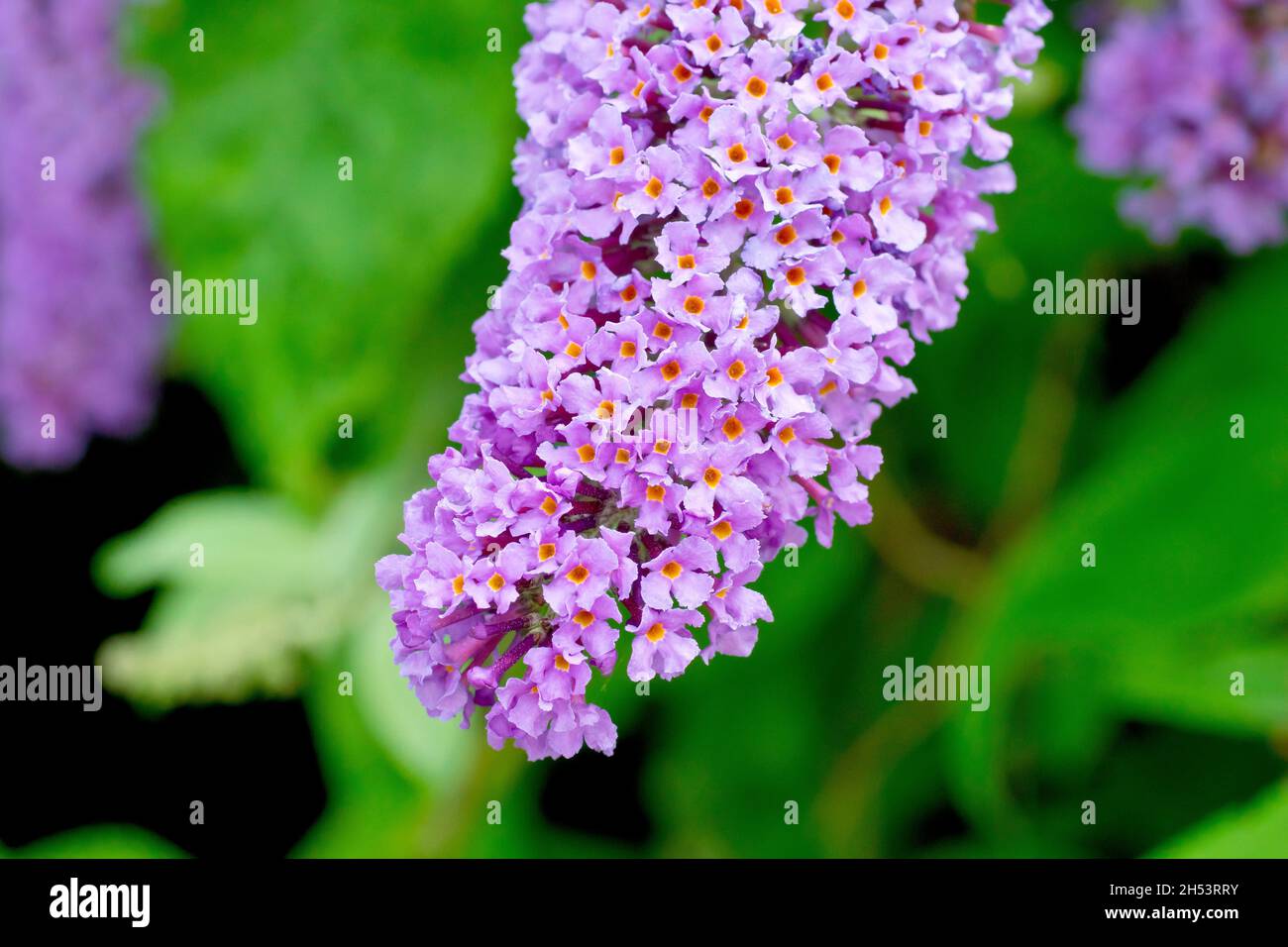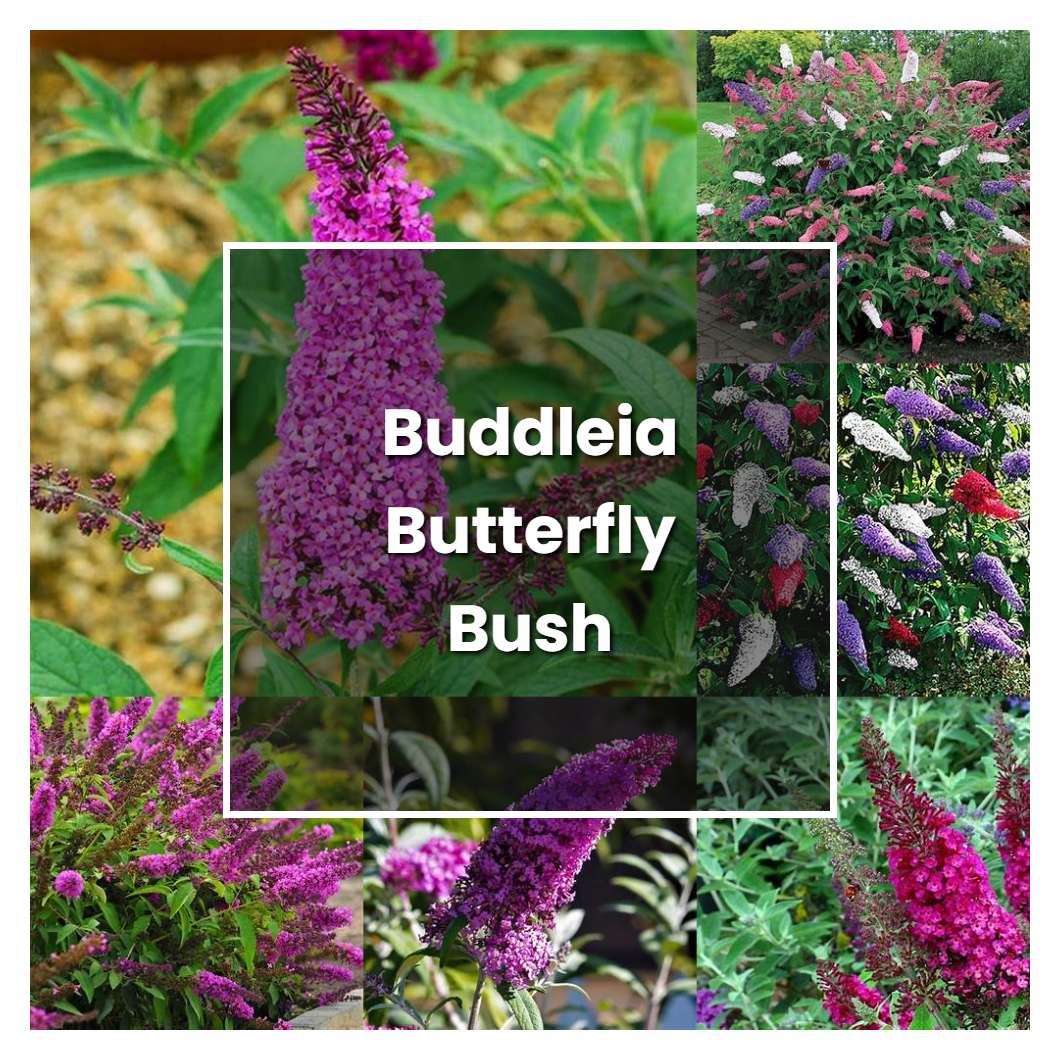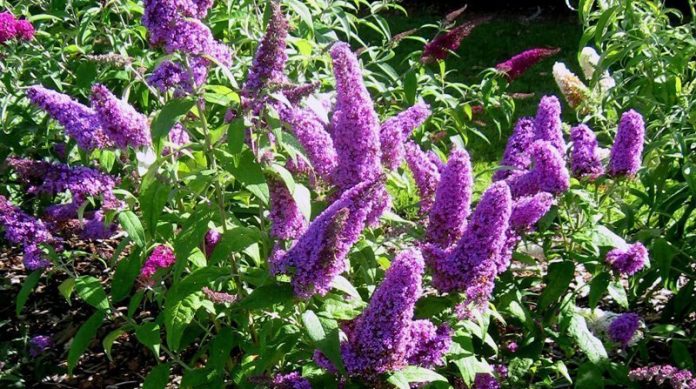What is Buddleia and Why is it Special?
Buddleia, commonly known as the Butterfly Bush, is a stunning flowering shrub that has gained popularity among gardeners and nature enthusiasts alike. This beautiful plant is a magnet for pollinators, attracting butterflies, bees, and hummingbirds to its fragrant flowers. One of the key reasons Buddleia is a favorite among gardeners is its low-maintenance requirements, making it an ideal choice for busy people or those new to gardening. But what does Buddleia look like, and what makes it so special? In this article, we’ll delve into the world of Buddleia, exploring its unique characteristics, types, and growing conditions.
Native to China and Japan, Buddleia has been cultivated for centuries for its ornamental value. This deciduous shrub can grow up to 10 feet tall, with a spread of around 6 feet, making it a great addition to any garden or landscape. Its slender branches are adorned with long, conical flowers that come in a variety of colors, including pink, purple, blue, and white. The flowers are rich in nectar, making them a valuable source of food for pollinators.
But Buddleia is more than just a pretty face. It’s also a hardy and adaptable plant that can thrive in a range of conditions. It prefers well-drained soil and full sun, but can tolerate some shade and dry spells. This makes it an excellent choice for gardeners who want a low-maintenance plant that can withstand the elements.
Whether you’re a seasoned gardener or just starting out, Buddleia is a great addition to any garden. Its unique combination of beauty, hardiness, and low-maintenance requirements make it a must-have plant for anyone looking to attract pollinators and add some color to their outdoor space.
How to Recognize Buddleia: Key Features and Identification Tips
Now that we’ve introduced the Buddleia plant, let’s take a closer look at its physical characteristics. Buddleia is a deciduous shrub that can grow up to 10 feet tall, with a spread of around 6 feet. Its slender branches are adorned with long, conical flowers that come in a variety of colors, including pink, purple, blue, and white. The flowers are rich in nectar, making them a valuable source of food for pollinators.
One of the key features of Buddleia is its leaf shape. The leaves are long and narrow, with a pointed tip and a serrated edge. They are typically a deep green color, although some varieties may have a more grayish or bluish tint. The leaves are also slightly hairy, which can help to distinguish Buddleia from other plants.
Another way to identify Buddleia is by its growth habit. Buddleia is a fast-growing plant that can quickly become quite large. It has a tendency to grow upright, with a single stem or multiple stems that can become quite woody over time. This makes it a great choice for hedges or screens, as well as for adding height and structure to the garden.
So, what does Buddleia look like? In general, Buddleia is a medium-sized shrub with long, conical flowers and narrow, pointed leaves. It has a fast-growing habit and can quickly become quite large, making it a great choice for a variety of garden applications.
When trying to identify Buddleia, it’s also important to consider the time of year. Buddleia typically blooms in the summer months, producing long, conical flowers that are rich in nectar. During the winter months, the plant may go dormant, although it will still retain its attractive shape and structure.
Types of Buddleia: Exploring the Different Varieties
Buddleia is a diverse genus of plants, with over 100 different species and countless hybrids. While all Buddleia plants share certain characteristics, such as their ability to attract pollinators and their low-maintenance requirements, each type has its own unique features and growing conditions.
One of the most common types of Buddleia is Buddleia davidii, also known as the Butterfly Bush. This plant is known for its long, conical flowers that come in a variety of colors, including pink, purple, blue, and white. It is a fast-growing plant that can quickly become quite large, making it a great choice for hedges or screens.
Another popular type of Buddleia is Buddleia globosa, also known as the Orange Ball Tree. This plant is known for its bright orange flowers that are shaped like a ball, hence its common name. It is a slower-growing plant than Buddleia davidii, but it is still a great choice for adding a pop of color to the garden.
Buddleia alternifolia is another type of Buddleia that is worth mentioning. This plant is known for its unique, alternate leaf arrangement, which gives it a distinctive appearance. It is a fast-growing plant that can quickly become quite large, making it a great choice for hedges or screens.
When trying to determine what does Buddleia look like, it’s worth considering the different types of Buddleia and their unique characteristics. By understanding the different types of Buddleia, gardeners can make informed decisions about which plants to include in their garden and how to care for them.
In addition to the types of Buddleia mentioned above, there are many other varieties to choose from. Some popular hybrids include ‘Black Knight’, ‘Royal Red’, and ‘Summer Beauty’. These plants offer a range of different characteristics, including different flower colors and growth habits.
Regardless of the type of Buddleia, all plants in this genus share certain characteristics that make them a great choice for gardeners. They are low-maintenance, attract pollinators, and are relatively easy to care for. By understanding the different types of Buddleia and their unique characteristics, gardeners can make informed decisions about which plants to include in their garden and how to care for them.
Buddleia in Bloom: What to Expect from the Flowers
One of the most striking features of Buddleia is its beautiful flowers. The flowers of Buddleia are long and conical, typically measuring between 6-12 inches in length. They come in a variety of colors, including pink, purple, blue, and white, and are highly fragrant, emitting a sweet, honey-like scent.
The flowers of Buddleia are also highly attractive to pollinators, such as butterflies, bees, and hummingbirds. In fact, Buddleia is often referred to as the “Butterfly Bush” due to its ability to attract these beautiful creatures. The flowers are rich in nectar, making them a valuable source of food for pollinators.
When trying to determine what does Buddleia look like, it’s worth considering the shape and size of the flowers. The flowers are typically long and conical, with a rounded tip and a slightly curved shape. They are also highly fragrant, emitting a sweet, honey-like scent that is highly attractive to pollinators.
To encourage blooming in Buddleia, it’s essential to provide the plant with full sun and well-drained soil. Buddleia also requires regular watering, but make sure not to overwater, as this can lead to root rot and other problems. Fertilizing the plant regularly can also help to promote blooming.
Deadheading spent flowers is also an essential part of caring for Buddleia. Deadheading involves removing the spent flowers from the plant, which helps to encourage new blooms to form. Simply snip off the spent flowers with a pair of scissors or pruning shears, and the plant will produce new blooms in no time.
Overall, the flowers of Buddleia are one of the plant’s most striking features. With their long, conical shape and highly fragrant scent, they are a valuable source of food for pollinators and a beautiful addition to any garden.
How to Grow Buddleia: Tips for Planting and Care
Now that we’ve explored the different types of Buddleia and their unique characteristics, let’s dive into the world of growing Buddleia. With its low-maintenance requirements and ability to attract pollinators, Buddleia is a great addition to any garden. Here are some tips for planting and caring for Buddleia:
Soil Requirements: Buddleia prefers well-drained soil that is rich in organic matter. It can thrive in a variety of soil types, but it’s essential to ensure that the soil is not too wet or too dry. If your soil is heavy clay or sandy, consider adding compost or well-rotted manure to improve its structure.
Watering Needs: Buddleia is a drought-tolerant plant, but it will perform best with regular watering. Water the plant deeply once or twice a week, depending on the weather conditions. Avoid overwatering, as this can lead to root rot and other problems.
Pruning Techniques: Pruning is an essential part of caring for Buddleia. Prune the plant in the spring, removing any dead or damaged branches. Cut back the stems to about 12 inches from the ground, and shape the plant to maintain its desired shape.
Planting: Plant Buddleia in the spring or fall, when the weather is cooler. Choose a location that receives full sun and has well-drained soil. Space the plants about 3-5 feet apart, depending on the variety.
Fertilizing: Feed Buddleia with a balanced fertilizer in the spring, following the manufacturer’s instructions. Avoid overfertilizing, as this can lead to weak growth and reduced flowering.
Pest and Disease Control: Buddleia is generally a healthy plant, but it can be susceptible to pests and diseases. Keep an eye out for aphids, whiteflies, and spider mites, and treat the plant with insecticidal soap or neem oil if necessary. Regularly inspect the plant for signs of disease, such as yellowing leaves or black spots, and treat the plant with a fungicide if necessary.
By following these tips, you can enjoy the beauty and benefits of Buddleia in your garden. Whether you’re a seasoned gardener or just starting out, Buddleia is a great choice for anyone looking to attract pollinators and add some color to their outdoor space.
Common Mistakes to Avoid When Growing Buddleia
While Buddleia is a relatively low-maintenance plant, there are some common mistakes to avoid when growing it. By being aware of these mistakes, you can ensure that your Buddleia plant thrives and provides you with beautiful flowers and a haven for pollinators.
Overwatering: One of the most common mistakes to avoid when growing Buddleia is overwatering. Buddleia prefers well-drained soil and can be susceptible to root rot if the soil is too wet. Make sure to water your Buddleia plant deeply but infrequently, and avoid getting water on the leaves or crown of the plant.
Underwatering: On the other hand, underwatering can also be a problem for Buddleia. If the soil is too dry for too long, the plant may become stressed and produce fewer flowers. Make sure to water your Buddleia plant regularly, especially during hot and dry weather.
Inadequate Pruning: Pruning is an essential part of caring for Buddleia, but inadequate pruning can lead to weak and leggy growth. Make sure to prune your Buddleia plant regularly, removing any dead or damaged branches and shaping the plant to maintain its desired shape.
Not Providing Enough Sunlight: Buddleia prefers full sun to partial shade, so make sure to provide your plant with enough sunlight. If your Buddleia plant is not getting enough sunlight, it may not produce as many flowers or may become leggy and weak.
Not Mulching: Mulching is an important part of caring for Buddleia, as it helps to retain moisture in the soil and suppress weeds. Make sure to mulch around the base of your Buddleia plant, using a layer of organic mulch such as wood chips or bark.
By avoiding these common mistakes, you can ensure that your Buddleia plant thrives and provides you with beautiful flowers and a haven for pollinators. Remember to water your plant deeply but infrequently, prune it regularly, and provide it with enough sunlight and mulch.
Buddleia in the Garden: Companion Planting and Design Ideas
Buddleia is a versatile plant that can be incorporated into a variety of garden designs. Its long, conical flowers and attractive foliage make it a great addition to any garden, and its ability to attract pollinators makes it a valuable asset for gardeners who want to create a wildlife-friendly garden.
One way to incorporate Buddleia into your garden design is to use it as a companion plant. Buddleia pairs well with a variety of plants, including lavender, rosemary, and coneflower. These plants share similar growing conditions and can help to create a beautiful and fragrant garden.
Another way to use Buddleia in your garden design is to create a pollinator-friendly garden. Buddleia is a valuable source of nectar for pollinators, and its long, conical flowers make it a great choice for a pollinator garden. Consider pairing Buddleia with other pollinator-friendly plants, such as bee balm and black-eyed Susan, to create a garden that is both beautiful and beneficial for wildlife.
Buddleia can also be used as a hedge or screen, providing a beautiful and fragrant barrier between different areas of the garden. Consider using Buddleia as a hedge along a fence or wall, or as a screen to block out unwanted views.
In addition to its use as a companion plant or hedge, Buddleia can also be used as a specimen plant. Its attractive foliage and long, conical flowers make it a great choice for a focal point in the garden, and its ability to attract pollinators makes it a valuable asset for gardeners who want to create a wildlife-friendly garden.
When designing a garden with Buddleia, it’s essential to consider the plant’s growing conditions. Buddleia prefers well-drained soil and full sun to partial shade, so make sure to choose a location that meets these requirements. Also, consider the mature size of the plant and leave enough space for it to grow and spread.
By incorporating Buddleia into your garden design, you can create a beautiful and fragrant garden that is both beneficial for wildlife and enjoyable for you and your family. Whether you use it as a companion plant, hedge, or specimen plant, Buddleia is a great choice for any garden.
Conclusion: Why Buddleia is a Must-Have Plant for Any Garden
Buddleia is a beautiful and low-maintenance plant that is a must-have for any garden. With its ability to attract pollinators and its unique characteristics, Buddleia is a great addition to any garden. Whether you’re a seasoned gardener or just starting out, Buddleia is a great choice for anyone looking to add some beauty and life to their outdoor space.
By understanding what Buddleia looks like and how to care for it, you can enjoy the many benefits of this beautiful plant. From its long, conical flowers to its attractive foliage, Buddleia is a great choice for any garden. And with its ability to attract pollinators, Buddleia is a valuable asset for gardeners who want to create a wildlife-friendly garden.
So why not give Buddleia a try? With its low-maintenance requirements and beautiful flowers, Buddleia is a great choice for anyone looking to add some beauty and life to their garden. Whether you’re a seasoned gardener or just starting out, Buddleia is a great choice for anyone looking to create a beautiful and pollinator-friendly garden.
In conclusion, Buddleia is a must-have plant for any garden. With its unique characteristics and ability to attract pollinators, Buddleia is a great choice for anyone looking to add some beauty and life to their outdoor space. So why not give Buddleia a try and see the beauty it can bring to your garden?



/JackyParkerPhotography-f2fb3d4125cf428a8efcf4eb92218bb6.jpg)



